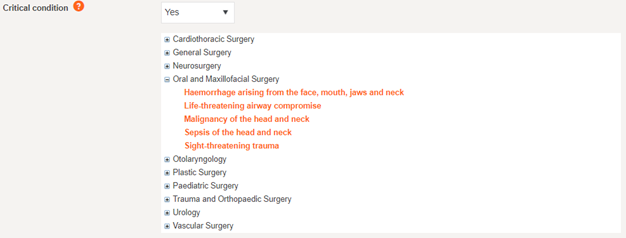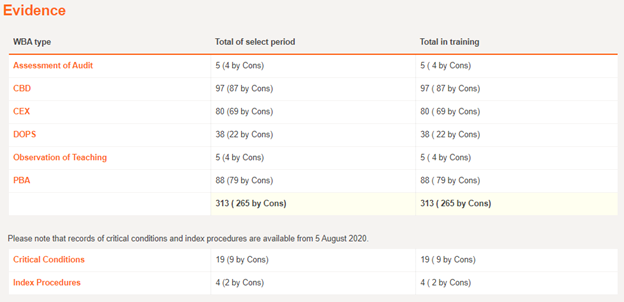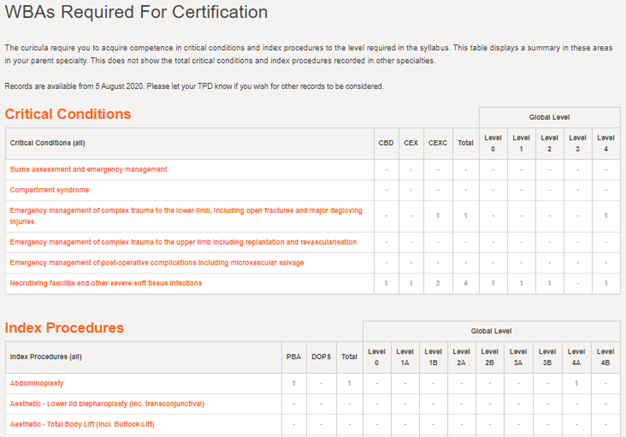New ISCP critical conditions and index procedures features
20 October 2020
The way that workplace-based assessments (WBAs) are linked to the syllabus has changed. This is as a result of new standards for curricula and assessment mandated by the GMC and in readiness for the introduction of an outcomes-based surgical curriculum in 2021.
In place of syllabus ‘topic linking’ the curriculum will require linking of WBAs to the critical conditions and index procedures that represent the scope of practice necessary for certification. Summary information is still be available in the portfolio but is displayed differently as illustrated in the figures below. The critical conditions and index procedures were identified following wide consultation with clinicians, trainers and trainees in each specialty. They have been approved by the GMC as central and fundamental to safe practice.
Critical conditions are those where a misdiagnosis could be associated with devastating consequences for life or limb. Trainees’ learning in the critical conditions will be assessed using the Case Based Discussion (CBD) and/or the Clinical Evaluation Exercise (CEX/C) which both include an assessment of clinical judgement and decision-making. Trainees can indicate which of their CBD and/or CEX/C assessments refer to the critical conditions and a summary will then display in the portfolio as illustrated in the figures below.
Index procedures are the common and important operations central to each specialty. Taken as a group, they are representative of the breadth of operative practice in the specialty. They are, therefore, of significant importance for patient safety and demonstration of safe practice. Trainees’ learning in the index procedures will be assessed using the Procedure Based Assessment (PBA) which, as well as assessment of technical competence, also includes an assessment of clinical judgement, decision-making and team-working. Trainees can indicate which of their PBAs refer to the index procedures and a summary will then display in the portfolio as illustrated in the figures below.
By reviewing assessment of the critical conditions and index procedures through the CBD, CEX/C and PBA, Assigned Educational Supervisors will be encouraged to make a more rounded and holistic professional judgement of trainee capability with less need to verify syllabus detail than before. Overall, linking WBAs to critical conditions and index procedures rather than syllabus topics better reflects the principles of outcomes-based curricula and the certification requirements which must be reached by the end of the training programme.
Following the changes made this year, from August 2021, the introduction of the new outcomes-based curricula will see the assessment of a small number of high level outcomes - the Capabilities in Practice (CiPs) and Generic Professional Capabilities (GPCs) by means of the new Multiple Consultant Report (MCR). Together, these changes will result in a significant move away from the more granular assessments that we have been using since 2007. More information is available here.
The move to an outcomes-based curriculum aims to address the criticism of the emphasis placed on granular competence-based assessment and provide all those involved in training with the opportunity to focus more on the end product rather than the process of training.
Figure 1: Selecting critical conditions screenshot

Figure 2: Selecting index procedures screenshot

Figure 3: Portfolio Summary screenshot

Figure 4: Portfolio WBAs Required for Certification screenshot
